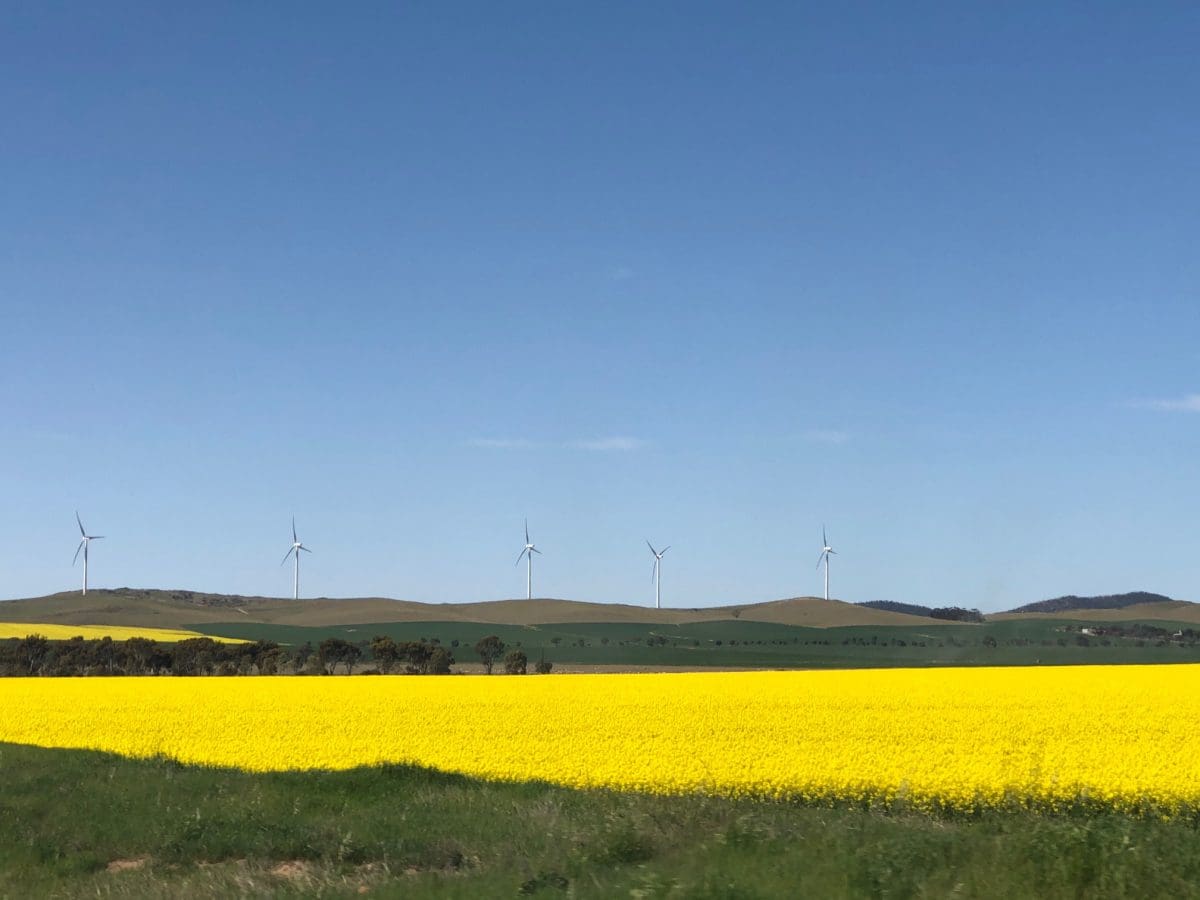
A crop of canola at Black Springs in South Australia. Photo: Vanessa Worrall
A SOLID export sales program of new-crop wheat and a buoyant canola market are attracting the bulk of forward selling from growers as Australia hurtles towards its first bumper harvest since 2016.
Headers are already rolling in Queensland on wheat and barley, with chickpeas expected to start in the next couple of weeks, and the northern pulse looks like it will be stored on farm by growers if they miss premiums for early delivery.
A premium for barley for early delivery also exists, and is expected to prevail through this month as feedlots look to cover themselves until new-crop barley and wheat becomes available in volume late next month.
If barley misses the early slot, and export values stay where they are, growers are likely to hang on to it and wait for prices to rally on export demand from markets including Japan, Thailand and Saudi Arabia, and domestic consumers who see it as better value than wheat.
NSW first sellers
Most growers in northern NSW have sold little tonnage since the 2017 harvest because of drought, and are keen to generate some cash flow as soon as possible.
AMPS agronomist Tony Lockrey said the Moree district was about three weeks away from harvesting its barley.
“There’ll be a chunk of that barley pre-sold, and I think growers will fill up their silos with the rest of it and sit on it.
“They’ll deliver some wheat, and they might bunker some wheat too.”
Lenders have generally held off demanding loan repayments in full from growers through the drought years, and are now looking forward to some debt reduction from growers.
Mr Lockrey said that did not mean all growers would be selling everything they could at harvest.
“Bank managers realise the best value of the crop isn’t always found at harvest.”
A dry finish to the Queensland growing season will keep new-crop wheat exports to a minimum as flour and stockfeed millers consume nearly all local grain north of the border.
Differing scenario
Agracom export manager Brett Donoghue said he thought the grower was “well and truly undersold” on new crop based on concerns about yield and quality which would be allayed with a big general rain or two in coming weeks.
“A fair bit of canola has been sold forward already, and guys have tipped their toe in on the wheat.
“It’s all going to come down to cash flow requirements.
“If we do get finishing rains in spring, and get to harvest with good milling quality, there will be some really good demand for that, but if we had a feed wheat event and the rain doesn’t stop, that will be devastating for price.”
Thomas Elder Markets manager commodity markets insights Andrew Whitelaw said wheat and canola appeared to be the commodities to sell at harvest, and barley could be worth holding, given its ability to appreciate if next year turns dry in Australia or the Northern Hemisphere.
“If you held on to barley that was worth $180 a tonne in 2016 for two-and-a-half years, you could have sold it for $400,” Mr Whitelaw said.
“That’s a pretty good return on your investment.”
“I wouldn’t want to sell everything at harvest.”
Given the increased equity grain provides growers, Mt Whitelaw said borrowing against it might be an option, provided banks were agreeable.
“Money is cheap, and interest rates aren’t going to rise sharply any time soon.”
Mr Whitelaw said the amount of grain and fodder which has been carted north into NSW and Queensland at great expense during the drought was still in consumers’ minds, and some growers were looking at bunker storage for silage and grain as a wise investment.
Early exports
Shipments of feed and milling wheat from southern Australian ports are booked to load in December and January, when exports from the Black Sea are expected to tail off.
Provided the Australian dollar does not strengthen considerably, this should shift some Asian demand to Australia.
“It’s going to take a full shipping year to move this crop, and wheat and canola will be easier to shift than barley,” Wilken Group trader Andrew Kelso said.
“In NSW, given some growers have had no cash sales to speak of for a couple of years, there should be plenty of wheat and canola and some chickpeas coming from them.”
Ahead of this, Victorian and South Australian terminals appear to be pushing out their last cargoes of 2019-20 wheat, barley and field peas this and next month to clear the decks for new crop.
Current-crop canola has just about sold out, and no new-crop cargoes are believed to have been out of southern Australian ports.
With crushers in Europe concentrating on Northern Hemisphere supply, this is not unusual for this time of year, and canola exports from Australia usually start with a rush in the second half of December.
Feedmills eye barley, pulses
ICM consultant Andrew Cottle said, depending on location, canola and wheat were likely to lead growers’ off-the-header sales, while barley looked like the grain to store.
“Canola will be a cash cow, and wheat to a large degree.”
“When you look at the relationship between wheat and barley prices, it’s telling you to hold wheat and sell barley.”
Stockfeed millers are likely to up their use of faba beans and field peas if values sink from current levels based on a continued absence of volume export demand.
Both pulses have good binding properties in pellets, and will displace soymeal and canola meal.
Grain Central: Get our free daily cropping news straight to your inbox – Click here

HAVE YOUR SAY